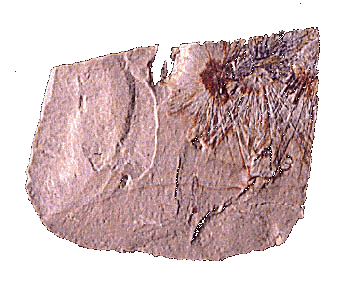|
The Demospongia is by far the most diverse
sponge group. Greater than 90 percent of
the 5,000 known living sponge species are demosponges. This ratio is not
maintained in the fossil record, where less than half of the known genera and
families are demosponges. However, the vast majority of living demosponges do
not possess skeletons that would easily fossilize, thus
their fossil diversity, which
peaks in the Cretaceous, is probably an enormous underestimate of their true diversity.
As their great number of species would suggest, demosponges are found in many
different environments, from warm high-energy intertidal settings to quiet cold abyssal
depths. Indeed, all of the known freshwater poriferans are demosponges.
|
 |




